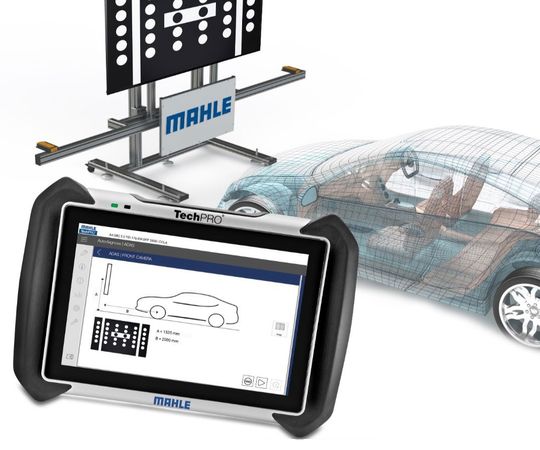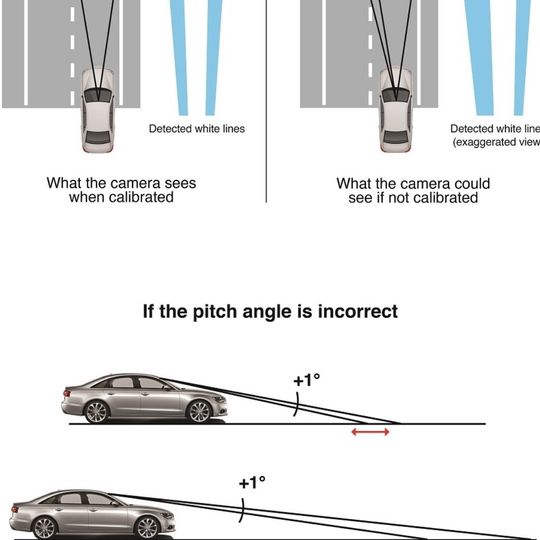ADAS Calibration FAQ
What is ADAS?
ADAS is a collective term that refers to a huge number of camera and sensory technology integrated into modern cars.
These technologies are designed to increase the vehicles overall safety.
ADAS features include, but are not limited to:
What is ADAS
-
Adaptive cruise control (ACC)
-
Adaptive head lights
-
Adaptive light control
-
Autonomous emergency braking (AEB)
-
Automatic parking
-
Automotive night vision
-
Automatic braking systems (ABS)
-
Proximity monitoring
-
Blind spot monitoring
-
Rear view cameras
-
Driver drowsiness detection
-
Collision avoidance systems
-
Forward collision warning
-
Intelligent speed advice (ISA)
-
Pedestrian monitoring
-
Proximity monitoring
-
Traffic sign recognition
-
Lane departure warning (LDW)
-
Lane change assistance (LCA)
-
Rear view cameras
-
Turning assistant
-
Hill Descent
-
Hill Start Assist
-
Glare Free High Beam
-
Intersection assist
-
Emergency Braking
-
Cross Traffic Alert
-
Park Assist
-
Pedestrian Detection
-
Cyclist Detection
What is ADAS Calibration?
ADAS calibration refers to the process carried out to align cameras and sensors on a vehicle so the vehicle’s ADAS systems are operating properly.
Why do I need a windscreen calibration?
ADAS systems use a collection of camera and sensors to effectively deliver information and data to the driver and the car’s on-board computer.
These sensors are usually integrated into the vehicle’s windshield.
When a windshield is replaced these cameras and sensors usually move. This can potentially undermine the accuracy of the data collected by the sensors and cameras.
ADAS calibration corrects this and ensures that the vehicle’s ADAS system is operating as intended.
What is the difference between dynamic and static calibration?
Dynamic Calibration
Is the process of actually driving the vehicle to complete the calibration
Static calibration
Is where N2 Auto Care use our state of the are Digital calibration system to successfully calibrate the vehicles ADAS system.
How long does it take to complete a calibration?
A full windshield replacement with a full calibration will take around 2 hours.
If the calibration is likely to take longer, we will give you a revised timeline.
When should I get an ADAS calibration?
All glass replacements will almost inevitably cause changes to the angle of the on-board cameras and sensors.
This small difference can be the difference between a vehicle being involved in a road traffic accident or narrowly avoiding one.
With this in mind, vehicle manufactures strongly recommend that an ADAS calibration is carried out after a windscreen is replaced.
How Do I Book an ADAS Calibartation with N2 Auto Care?
Please get in contact with us directly to make an appointment.

Our ADAS system is certified by CESVI France
CESVI France is part of COVEA group. The COVEA Group is built on the synergy of strengths and identities of its founding mutuals and its partners and allies.
The COVEA Group currently insures 10.7 million vehicles, The Company has 11.5 million members and customers in France and has made €16.3 billion in sales. The company employees more than 21,000 people.
How dangerous can an uncelebrated ADAS system be?
The following vehicle technologies are dependent on the vehicle’s on-board ADAS system:
- Lane-keeping
- Adaptive cruise
- Automatic braking
- Blind spot-alert system
These essential safety systems work in collaboration with all the sensors and cameras on the vehicle.
A property calibrated ADAS system ensures that these technologies activate when necessary.
Accurate calibration also prevents false alarms which can lead to driver frustration and these accident preventing technologies from being manually switched off.
A properly calibrated system is essential in accurately judging speed and distance. Accuracy can be the difference between the automatic brakes triggering after a fatal accident has occurred or BEFORE the accident has had a chance to happen.
Does more need to be done to create awareness about repairing ADAS systems?
Vehicle manufacturers have position statements but general public awareness about the importance of ADAS calibration isn’t anywhere near where it needs to be.
A properly calibrated ADAS system can be the difference between life and death, so the public needs to be aware of the necessity of a properly, professional and accurate ADAS Calibration.
Is the occurrence of Uncalibrated ADAS systems widespread?
Unfortunately, as public awareness about the need for ADAS calibration isn’t anywhere close to where it should be, the number of vehicles with Uncalibrated ADAS systems continues to rise.
What does calibration affect?
Calibration affects:
What does calibration affect?
-
Adaptive cruise control
-
Adaptive high beam
-
Glare-free high beam
-
Adaptive light control
-
Automatic parking
-
Automotive navigation system providing up-to-date traffic information
-
Automotive night vision
-
Collision avoidance system
-
Crosswind stabilisation
-
Driver drowsiness detection
-
Blind spot monitor
-
Driver monitoring system
-
Forward collision warning
-
Intersection assistant
-
Emergency driver assistant
-
Lane departure warning system
-
Hill descent control
-
Lane change assistance
-
Pedestrian protection system
-
Traffic sign recognition
-
Intelligent speed adaption/advice
-
Turning assistant
-
Vehicular communication systems
-
Wrong-way driving warning
When do I need to get my ADAS recalibrated?
When do I need to get my ADAS recalibrated?
-
After a window replacement
-
If the dashboard shows a fault
-
If a camera has been disconnected
-
Change of suspension
-
Change of wheel alignment
-
After an accident or bodywork repair
-
After a change of Wheel diameter
-
Change of suspension components and geometry
To schedule an ADAS calibration at N2 Auto Care, get in contact with us directly.


